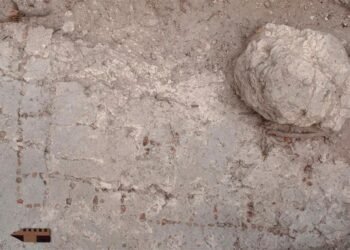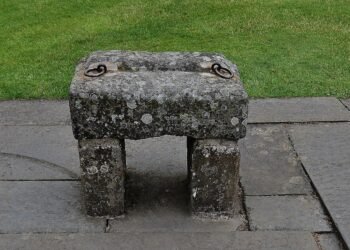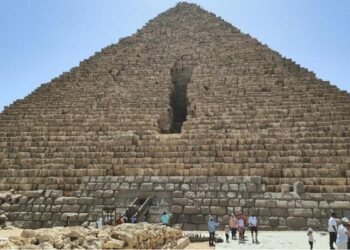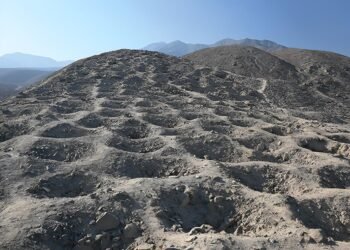A team of Egyptian and German archaeologists has unearthed a hidden burial chamber belonging to Edi, the daughter of Djefaihapi, a prominent official from the 12th Dynasty, at the ancient necropolis of Asyut, Egypt. Djefaihapi, also known as Hepzefa, Hapidjefa, or Djefaihap, served as the nomarch (provincial governor) of Asyut during the reign of Pharaoh Senusret I (also known as Sesostris I), who ruled from approximately 1961 to 1915 BCE.
Djefaihapi played a crucial role in overseeing this strategically important region, known for its trade routes and proximity to Nubia, a valuable source of gold and minerals. His tomb, known as Tomb 1, is the largest preserved non-royal rock-cut tomb of the Middle Kingdom, measuring roughly 400 feet in length and over 30 feet high. This tomb exemplifies the architectural sophistication of the era, typically reserved for elite figures.
The discovery of Edi’s burial chamber occurred during routine cleaning work inside Djefaihapi’s tomb by a joint team from Sohag University and the Free University of Berlin. According to Dr. Mohamed Ismail Khaled, Secretary-General of the Supreme Council of Antiquities, the burial chamber was found 50 feet (15 meters) deep in the northern shaft of her father’s tomb. Inside the chamber, archaeologists uncovered two ornately decorated wooden coffins, one placed inside the other. The outer coffin measured 8.6 feet (2.6 meters) in length, while the inner coffin was 7.5 feet (2.3 meters) long.
Both coffins were intricately inscribed with funerary texts that depicted the ancient Egyptian journey to the afterlife. Despite the chamber being looted in antiquity, the team managed to recover significant artifacts, including the lid of one of the coffins, canopic jars intended to hold the deceased’s internal organs, wooden statues, and some of Edi’s skeletal remains. “Preliminary studies suggest that Edi died before reaching the age of 40 and suffered from a congenital foot defect,” said Dr. Mohamed Ismail Khaled.
The tomb had been ransacked by grave robbers long ago, with many of the burial goods stolen and Edi’s body desecrated. Her remains were removed from the coffins, and the canopic jars were smashed. However, archaeologists were able to recover some fragments of her body, including her skull. This allows experts to continue their investigation into her health and lifestyle, as well as the circumstances of her death.
The coffins themselves are among the most artistically detailed and well-preserved examples from the region. Photos of the colorful and well-preserved sarcophagi have been released, showing the vibrant craftsmanship typical of elite burials from this period.
Pharaoh Senusret I, under whom Djefaihapi served, was a key figure in consolidating Egypt’s political and economic power during the Middle Kingdom. His reign saw a period of stability and expansion, strengthening Egypt’s control over its territories and trade routes. Djefaihapi’s role as governor of Asyut was vital in this period of growth, and his grand tomb reflects his high status within the provincial administration.
As the archaeological team continues to clean and analyze Edi’s remains, there is hope that further discoveries will be made regarding her life, health, and burial.






















